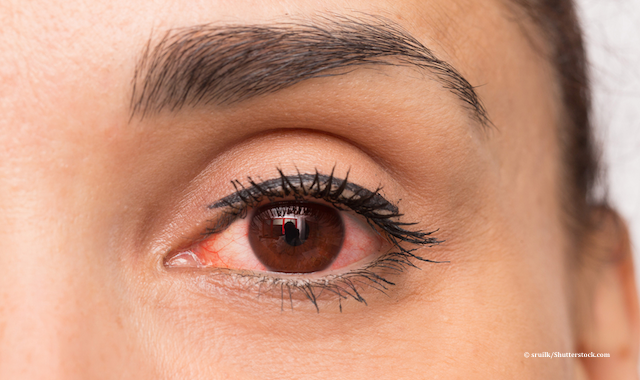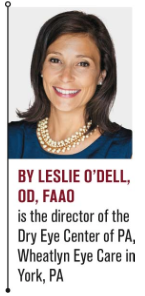Why meibography can be a game-changer in treating dry eye
Dry eye disease (DED) has been historically underserved. Leslie E. O’Dell, OD, FAAO, summarizes what equipment is available today to help you begin evaluating your dry eye patients’ glands.


The views expressed here belong to the author. They do not necessarily represent the views of Optometry Times or UBM Medica.
The new year is here, filled with new insurance plans, deductibles, copays, and maybe a new electronic medical record (EMR) system to learn, oh joy! It is also a time for new beginnings and adopting new ways to treat and screen our patients for an underserved disease-dry eye disease (DED).
It is estimated that 30 million Americans have complaints of DED with only 16 million diagnosed1,2 What are we missing? Are we not asking the right questions? The words of Donald R. Korb, OD, ring clear in my ears, “We don't know what we don't know.”
If we don’t ask right questions or look for dry eye on every patient we don't know if dry eye is there. It is that simple.
Previously from Dr. O'Dell: Neck pain in the exam room and how to alleviate it
Testing for dry eye
If you are performing a clinical exam and you see findings consistent with DED, decreased tear break-up time (TBUT) < 10 sec (with fluorescein (FL) or non-invasive TBUT), corneal and conjunctival staining with vital dye, or hyperosmolarity (>308 mOsm/L and/or intereye difference of 8 mOsm/L), take a step back from the slit lamp and pull out a dry eye questionnaire.
What?
The technician already recorded “no symptoms of dry eye” in the history of present illness (HPI). If you are seeing DED during an exam and the patient is not feeling the symptoms, this may indicate a bigger problem because the condition can be neurotropic and at risk for corneal complications.
A validated dry eye questionnaire helps record the severity of a patient’s symptoms and can be used a point of reference for future visits. TFOS DEWS II recommends using, founded on evidenced-based science, the Ocular Surface Disease Index (OSDI) and the Dry Eye Questionnaire (DEQ-5) questionnaires. Many are also using the SPEED survey.
For the initial exam, start a therapy and schedule a return visit when you have more time devoted to testing specifically for DED. Repeat the questionnaire at these visits because it will be used as a guide on how treatment progresses and how patient symptoms change over time.
Invest in meibography
Invest in a form of meibography. It is essential to our practices.
That’s right, meibography is a screening tool for all ages. With a large majority of our dry eye patients suffering from a form of meibomian gland dysfunction, meibography is the best way to image meibomain glands and educate patients on their condition.
Related: Combating dry eye with punctal plugs
Meibomian gland changes can even be found in young children, possibly due to digital device usage. When using such devices, the blink rate is dramatically reduced. This causes more exposure of the ocular surface during the day.
When we blink less, the tear film is not adequately distributed across the surface of the eye and the tear film undergoes more evaporative stress leading to rapid tear break up times and inflammation. Inadequate blinking and partial blinking also contributes to meibomain gland obstruction as inactivity leads to decrease in meibum expression and inspissation of the glands.
I challenge you this new year to turn on your transilluminator and examine the meibomian glands at the slit lamp for all of your patients. The technique is simple-all it takes is a slight flip of the bottom eyelid over the tip of the transilluminator at the slit lamp. In this view, you will see a pink/red glow through the eyelid, and the glands will appear as dark lines perpendicular to the lid margin. With time, you will be more comfortable juggling the focus while maintaining a good light source under the lid.
After the screening, have the conversation about dry eye with your patient. Educate patients about these delicate glands and the big role they play in tear film stability. Remember, education is the first step in treatment.
Meibography equipment options
I have been fortunate enough to have used meibography since the first piece of equipment became mainstream. I was given a tool that allowed me to document the appearance of the glands and monitor them over time, but I also was able to show patients what was hiding in their eyelids.
2018 brings many great devices to image meibomian glands. Here is a quick review of what is currently available:
LipiView II (Johnson & Johnson Vision)
• Large footprint
• Difficult for imaging superior glands
• Great image quality of meibomian glands
• Comparison images stored in the software-great for patient education
• Ability to asses not only gland structure but partial blink rate and lipid layer thickness
• Price: $$$
LipiScan (Johnson & Johnson Vision)
• Smaller footprint
• Portable-great for screening health fairs, etc.
• Easy to image both upper and lower glands
• Great image quality
• Comparison images available-great for patient education
• Price: $$
Related: The changing dry eye dynamic
Keratograph 5M (Oculus)
• Ability to perform other testing-dry eye module with TBUT, topography
• Images both upper and lower glands
• Great photos of eyelashes and lid margin in diffuse white light
• Dry eye report available
• Price: $$$
Meibox (Box Medical Solutions)
• Smallest footprint
• Connects to slit lamp
• Easy to image upper and lower glands
• Image quality can vary based on focus of the instrument
• Price: $
(Key: $=up to $10K, $$=$10K-$20K, $$$=$20K-$40K)
With the list expected to continue to grow, why wait to invest in meibography? This is a great way to set your practice apart from your competition. You do not have to have a dedicated dry eye center to invest in meibography, all you need are patients with meibomain glands.
References
1. Farid, M. Dry Eye Disease: Let’s Start Thinking Outside of the Artificial Tear Box. American Academy of Ophthalmology. Available at: http://www.aaojournal.org/article/S0161-6420(17)31061-8/pdf. Accessed 1/8/18.
2. Farrand KF, Fridman M, Stillman IO, Schaumberg DA. Prevalence of Diagnosed Dry Eye Disease in the United States Among Adults Aged 18 Years and Older. Am J Ophthalmol. 2017 Oct;182:90-98.
Newsletter
Want more insights like this? Subscribe to Optometry Times and get clinical pearls and practice tips delivered straight to your inbox.